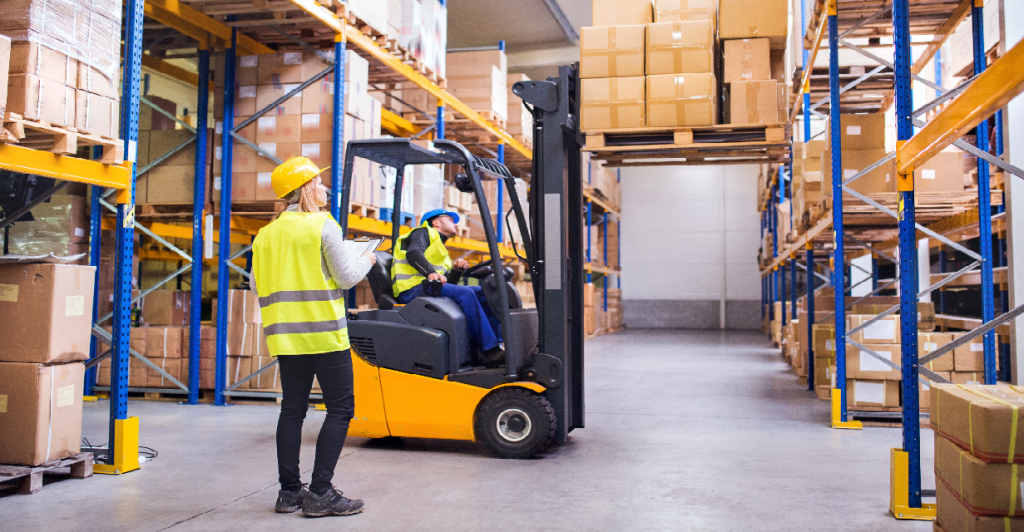
There are a number of myths about battery-powered forklifts. They don’t work for 3-shift operations; they don’t work outdoors; they’re not up to the task of moving multi-ton, heavy-duty payloads. It’s time to set the record straight!
Myth: Electric forklifts require battery changes for multi-shift operations.
Busting this myth is our favorite. It’s also the most important. Why? It’s prevented thousands of companies from gaining the commercial, safety and sustainability benefits of battery power while causing others to spend too much on their battery changing operations.
Fast charge technology has eliminated the need to change batteries, even for high-demand, multi-shift operations. Our fast charge system returns power so fast that operators can keep their trucks at an ideal SoC simply by charging during scheduled lunch, coffee and bio breaks. The battery is finished and equalized once a week and never leaves the truck.
Myth: Fast charging damages batteries
With normal charging, weekly equalizing and typical maintenance, fast charging typically creates no more wear and tear than conventional charging. A battery can deliver the same total amp-hour life in battery changing and fast charging operations. However, extended durations at elevated temperatures is a known detriment to battery life. It is important to check with the manufacturer regarding reduced amp hours for fast charging applications.
Our fast chargers are engineered to be a “closed loop” system where the battery and charger are in constant communication. This allows the fast charger to react to changes in the battery’s temperature and voltage and automatically adjust charge rates to maintain an ideal temperature. This improves battery life and makes the system inherently safer.
Myth: Battery-powered forklifts can’t work in outdoor environments.
Early electric forklifts used DC motors, which relied on brushes to generate a magnetic field. The brushes created friction and heat, which led to the need to vent DC motor housings, exposing their components to the elements.
Today’s AC motors use magnets instead of brushes, allowing the motor to be sealed. Because AC motors are not exposed to the elements, they can withstand harsh conditions such as sea salt, rain and sawdust.
Environment is a factor when considering the use of lithium-ion batteries. Lithium, unlike lead batteries, are partly composed of electronics which, as we all know, do not fare well with excessive moisture. To the extent the truck manufacturers anticipate the environment and the use of lithium, the truck can be designed to “shield” the battery from adverse conditions.
Myth: Battery-powered forklifts slow down as the battery discharges.
Virtually every new electric forklift is equipped with AC motors. By eliminating brushes and improving system efficiency, AC motors avoid the progressive loss of power typical of older DC motors.
AC motors allow a forklift to maintain full power throughout each shift with no loss of productivity.
Select fast charging and operator charge during scheduled breaks. Eliminating battery changes and providing consistent power makes electric forklifts an excellent choice for high-demand applications.
Myth: The power, speed and torque of electric forklifts can’t match internal combustion (IC).
AC motors maintain torque at high speeds, which means forklift performance does not go down with the duty cycle, as with older DC motors.
When selecting batteries and fast chargers for a heavy-duty operation, it is mission-critical to match them to the demands of heavy-duty work.
When the power supply is right, electric forklifts with AC motors can match and even exceed the performance of their IC counterparts.
Myth: Switching from IC to electric requires too much up-front cash.
A decade ago, it was normal for fleets to purchase batteries and chargers outright, leading to a long return on investment (ROI) cycle. Today, equipment leasing companies will let you roll the cost of batteries and chargers into the forklift lease, meaning you don’t have to devote any up-front capital to your conversion. This allows companies to treat the switch from IC to electric as a monthly total cost of operations (TCO) lease expense allowing the savings to start on day one.
Bonus: You can even roll the cost of upgraded electric service into the lease.
Add the benefits of sustainability and workplace health and safety you get with battery-powered forklifts, and only dated information from unreliable sources would lead you to consider a different way to power your fleet.

Leading the way to renewed and renewable energy.
Copyright 2024 Stryten Energy. All rights reserved.